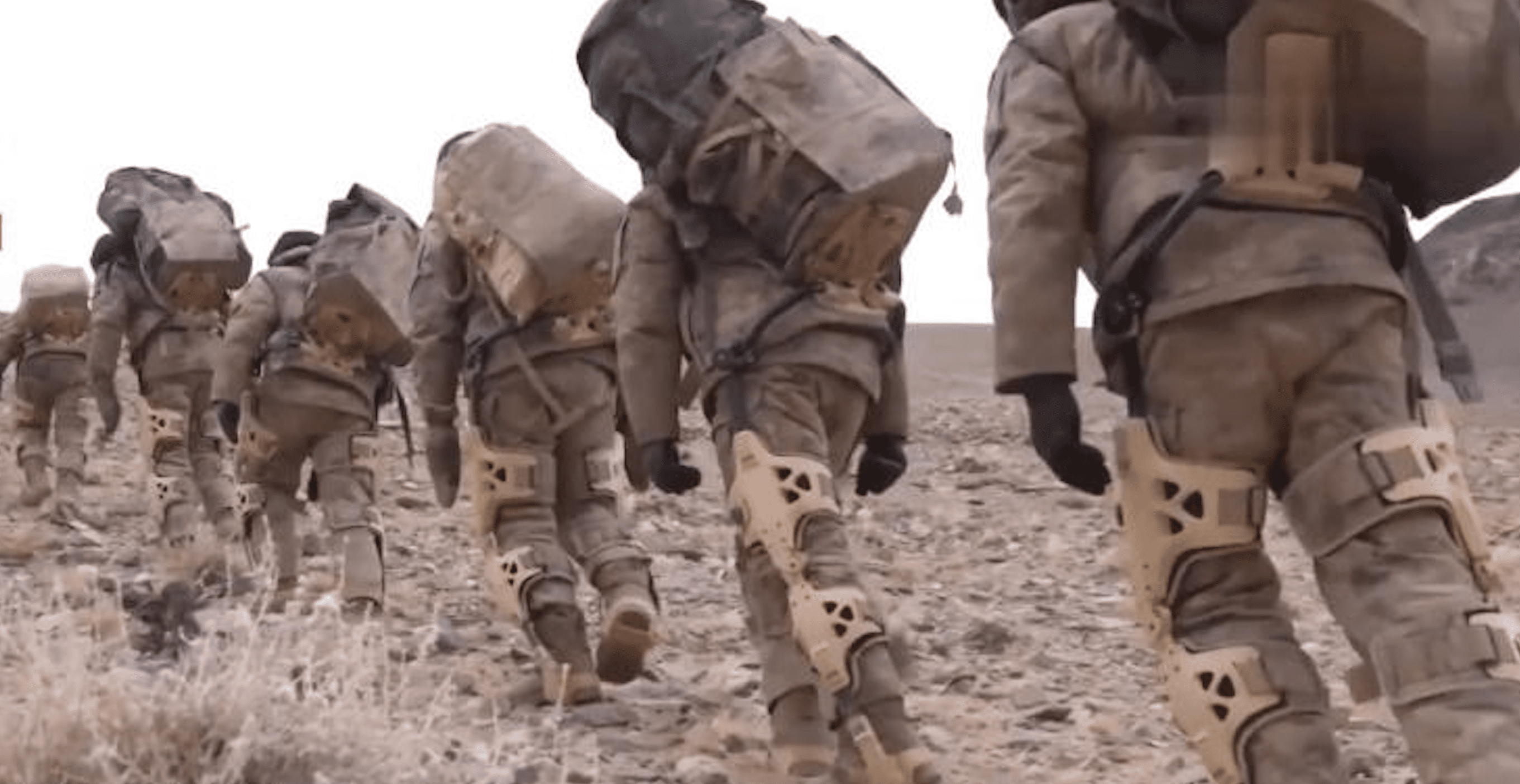
Picture this. You are an Indian soldier standing guard at 14,000 feet above sea level in the heavily disputed Galwan River Valley of the Himalaya mountain range. All of a sudden, the normal tension and eerie silence shift to pandemonium. A series of roaring jet-Esque noises echo through the valley as a platoon of Chinese soldiers donned in exoskeleton parts conduct aerial manoeuvres above you, releasing torrents of laser fire and destruction.
When the phrase “tactical exoskeleton” is used, there is a good chance that a scenario like that may come to mind – soldiers wearing a suit like Ironman or a Gundam Wing – a symbiotic relationship between man and killing machine. Luckily, no such suit exists on the modern battlefield, or at least not in such a grandiose form.
Modern military technology is navigating on a course never-before travelled in history. Global military superpowers have found themselves in a contentious arms race with each nation striving to have the upper hand on the battlefield in terms of weapons and equipment. The development of an operation tactical exoskeleton is one of those areas.
The United States has had its own attempt at exoskeleton development with the Tactical Assault Light Operator Suit (TALOS). In theory, the TALOS will augment the body of its suitor with tools that increase situational awareness as well as enhance physical strength and capabilities.
In typical fashion, China has not only developed its own tactical exoskeleton but has actually used it in professional operations; specifically, in the Himalayan region that is at the centre of the Sino-India conflict.
Going as far back as the 1800s, China and India have been locked into a land dispute over a 3,500-kilometer border along the Himalayan range. In 1962, a truce was signed between the two nations which ushered in a period of overall silence in the region. That peace was interrupted this past June with a deadly hand to hand skirmish near the Galwan River.
The heightened tensions in the region have led to disinformation and propaganda being promoted on social media from both sides, as well as reports of China’s alleged use of a microwave weapon directed at Indian soldiers that caused its targets to become sick and forfeit held territory.
In terms of adaptation to climate and terrain, China has been at a disadvantage in comparison to its well-seasoned enemy, but that has not stopped them from bringing out a tactical exoskeleton model to assist its weary soldiers. According to the Chinese Communist Party-aligned newspaper The Global Times, Chinese scientists have developed an exoskeleton that is “specially designed for high-altitude regions”. The specific details of the nomenclature of the model are publicly unavailable albeit some open-source information:
- The exoskeleton allegedly functions by transferring the weight of gear off the soldier’s back and legs and onto the tactical exoskeleton itself. According to Zhang Lijan from China’s Human Function Enhancement Technology Research Center, the exoskeleton can allegedly conserve 5-10% of the energy used in movements, and 70-80% while standing (both while wearing 25kg loads).
- There is no offensive or combat-oriented purpose for this model of an exoskeleton. Its primary function is to help Chinese soldiers carry heavy loads while traversing high altitude terrain.
- The Chinese tactical exoskeleton has had reported usage in the Himalayas in support of the ongoing conflict.
As of now, China has not publicly revealed a tactical exoskeleton that serves a more kinetic and ground fighting purpose on the battlefield. Needless to say, that does not immediately rule out the development of one. The Chinese use of exoskeletons in the Sino-India border dispute demonstrates the more realistic and practical uses of one. Less mega man, more enhanced leg brace.
This article first appeared on Sandboxx News
Image: Screen-capture of Chinese Military Propaganda (link)

